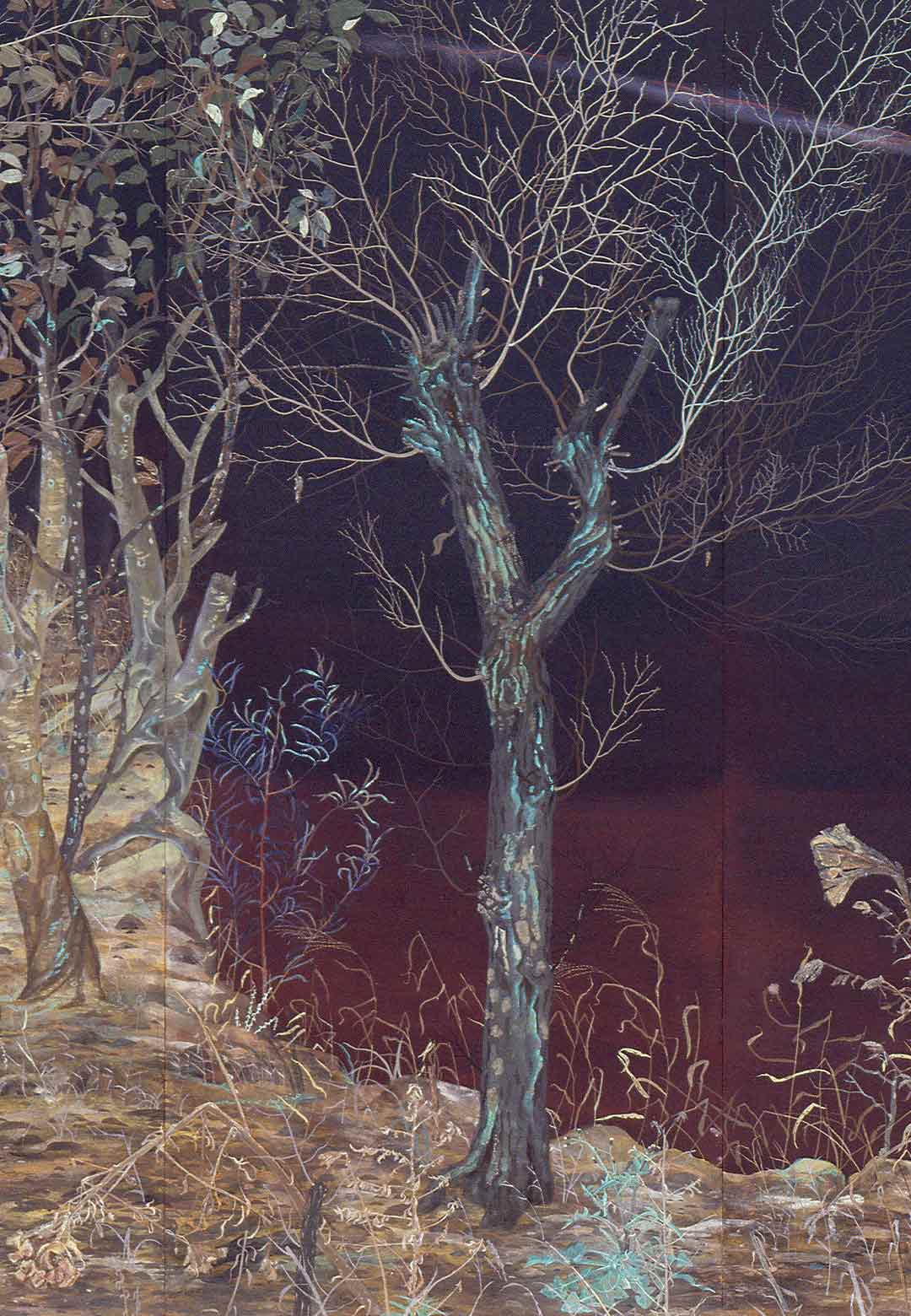Ippodo Gallery presents Ikuro Yagi: Grand Nature in the United States, from October 10 - November 22, 2024, the premier exhibition for the Japanese painter. Spanning works from 1989 - 2009, Yagi debuts overseas some of the greatest masterpieces created in his extensive career.
Over 10 painted and collaged works on Japanese washi paper, wood panels and canvas express a universal dialogue between nature and urban life in Japan, using the visual language of sumi ink and nihonga, in the art exhibition. Central to Yagi's paintings is the unspoken healing power of nature on the human spirit, serving as a gentle reminder of the endless kindness within reach. The Japanese artist will journey from Japan to New York for an opening reception celebrating his first solo exhibition in the US.
"Sumi ink is not simply carbon; infusion into the washi paper grants us a sense of holding a piece of nature. Perhaps it is the same sort of sensation as strolling amidst the trees," the contemporary artist shares.
At 69, Yagi continues his innovative nihonga painting practice from his long-established home in the Shizuoka Prefecture, where Mount Fuji serves as a constant source of inspiration. He sees no divide between urban life and the beauty of nature, which he prominently depicts in his work. His artistic journey began under the guidance of nihonga master Matazo Kayama at Tama Art University and Western-style painter Koji Kinutani, eventually leading him to Paris. This French influence revitalised his approach to nihonga, enabling him to explore various facets of material culture.
As witnessed in Ikuro Yagi: Grand Nature, Yagi's vibrant paintings feature sea creatures, blooming flowers and diverse wilderness elements, drawing on the decorative traditions of the Edo period (1603-1868). Alongside his work with Japan’s Agency for Cultural Affairs, Yagi has contributed to temples and shrines nationwide, including the famous Fushimi Inari shrine near Kyoto, known for its countless red torii gates. He creatively incorporates found objects—such as discarded wood from shrines and towns—into his art, continuing the tradition of nihonga in temple halls and castle sliding doors.
Yagi's Impression Kyoto (2003) meditates on wood as a traditional yet transient material. Asynchronous, the planks are transformed from mere functional items into a narrative about the passage of time and reconstruction. Central to Yagi's style is the depiction of nature in its raw state, characterised by powerful brush strokes and layered paper that evoke the spirit of Picasso’s collages, which redefined image-making and tradition. Influenced by Kanō and Hasegawa, including Tōhaku’s Pine Trees Screens, Yagi's techniques uniquely blend impressionist and abstract styles while highlighting the organic textures of mineral pigments, sumi, washi paper and wood in his contemporary art.
Yagi is represented in museum collections and spiritual sites throughout Japan, including the Hamamatsu Municipal Museum of Art, Niigata Bandaijima Art Museum, Hirano Museum of Art, Shimoda-shi Museum, Hiroshima Prefectural Art Museum and more. His works have been exhibited in Japan and Germany, earning accolades such as the Takashimaya Award for Art from the Takashimaya Cultural Fund.






 Sign in with email
Sign in with email










What do you think?